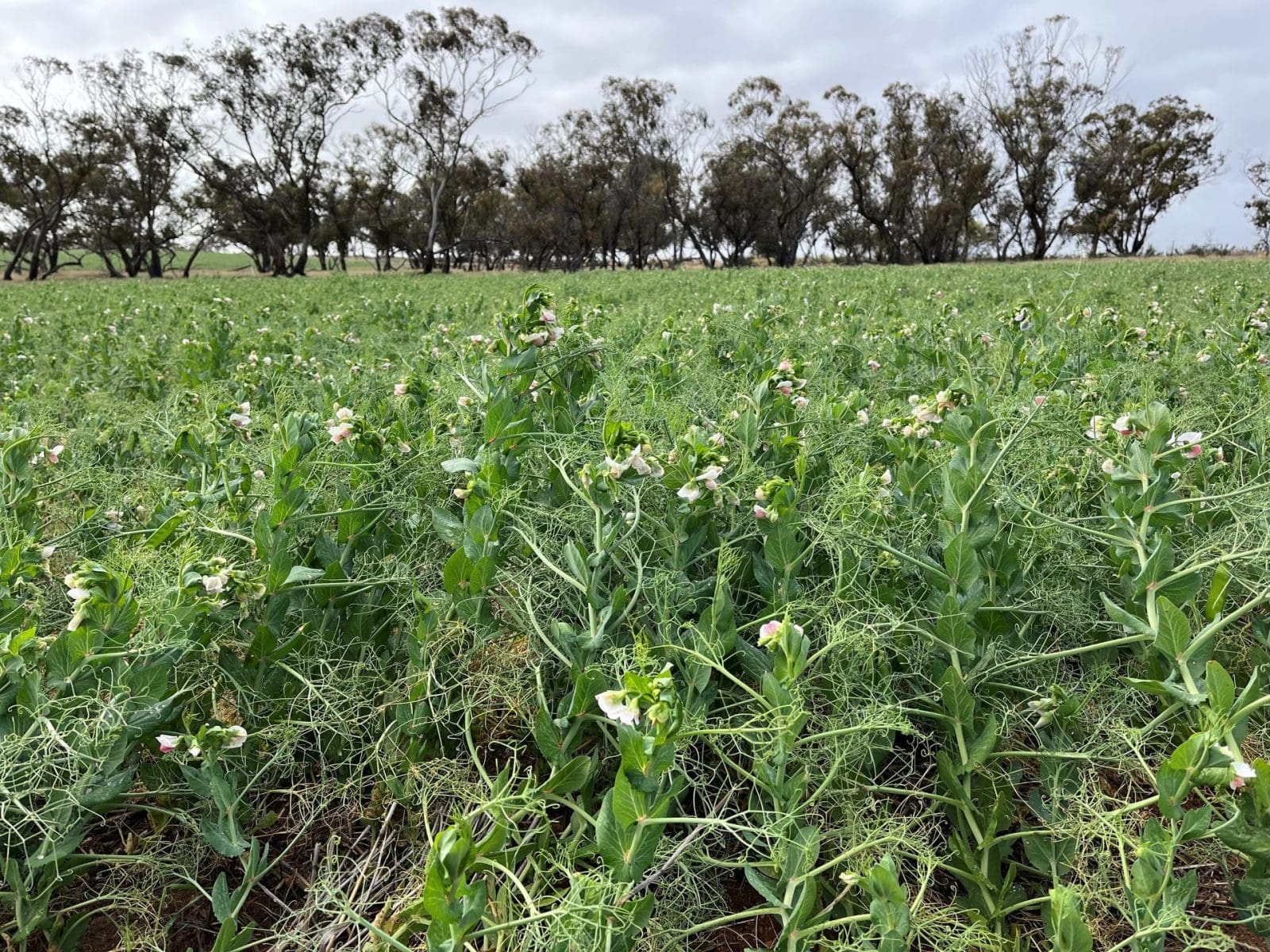
Australia may face increased competition from Canada in markets for pulses including field peas as a knock-on effect from US and Chinese tariffs, a RaboResearch report said.
AUSTRALIA’s winter pulse exports may face minor headwinds in the year ahead due to changes in global supply and demand, Rabobank says in a newly-released report from its RaboResearch division.
The food and agribusiness banking specialist says the most likely impacts on farmgate prices and export margins for pulses will stem from currency volatility and shipping costs.
Australia’s pulse exports are concentrated around lentils, chickpeas and faba beans for South Asia and the Middle East.
“These markets are not involved in the ongoing trade wars and the regions’ pulse fundamentals remain largely unaltered,” the report said.
However, the report said, the interplay of US and Chinese tariffs, along with their impacts on Canada’s role as a pea exporter, were expected to lead to changes in the pea trade.
In Australian pulses exports and tariffs report, Rabobank said this year had started with significant announcements from China and India regarding the pulse market.
China imposed a 100 percent tariff on Canadian peas, while India set a 10pc tariff on lentils and chickpeas, report author RaboResearch senior grains and oilseeds analyst Vitor Pistoia said.
“The new, complex trade environment is expected to reshape the global pulse trade, but Australia appears to be in a strong position,” Mr Pistoia said.
“India’s demand for Australian pulses remains robust, and many other key export markets are not involved in the current trade conflicts.”
For now, Mr Pistoia said, the burden of pulse tariffs falls primarily on Canada, one of Australia’s main competitors.
“China’s decision is likely to pressure pea prices, a market in which Australia has a small role.
“In 2024, peas accounted for less than 3pc of Australia’s total pulse exports by volume.”
The report said US tariffs were overall anticipated to have a minor impact on the global pulse trade.
“However, the inflationary effects of these tariffs could dampen global demand for pulses, as many importing countries also have trade surpluses with the US.
“Additionally, proposed shipping fees could further affect pulse markets by increasing shipping costs into 2026, particularly for containers.”
Indian demand
Similar to conditions in 2023, Mr Pistoia said India again seems to be facing inadequate pulse supplies to replenish its stocks and meet growing demand, placing Australia’s exporters in a favourable position.
“As the nation’s winter harvest advances, India has introduced global tariffs of 10pc on lentils and chickpeas.
“Despite providing a headwind to prices compared to a zero-tariffs scenario seen throughout most of 2024, such low tariffs are a sign that imports are necessary to keep the overall supply and demand balance.”

RaboResearch analyst Vitor Pistoia.
Mr Pistoia said the silver lining for Australian exports was that the exemption on Indian duties on peas, which compete with Australian lentils and chickpeas, is expected to be short-lived.
India’s duty-free imports of yellow peas will end by May 31 this year, with pigeon peas and black beans due to remain exempt until 31 March 2026.
“With the new-season Indian crops entering the system, close monitoring of international prices and domestic production will be crucial to gauge India’s demand for the second half of 2025.
“One of the main reasons for the Indian Government to implement import tariffs is to balance out farmgate prices and food inflation.”
RaboResearch expects to see a significant increase in Indian pulse imports in the 2024-25 financial year, driven by increased demand from a growing population and increasing per capita GDP.
Mr Pistoia said total Indian pulse imports could reach 6.7 million tonnes (Mt) in 2024-25, up 52pc year on year.
“This surge is mainly due to local production problems following dry growing conditions in previous years.”
US pulses
Mr Pistoia said the US played a relatively modest role in the global pulse market compared to its significance in other grains and oilseeds markets, and compared to other countries.
US pulse exports are less than half of Australia’s, and with minimal overlap in their export markets: in 2024, the US exported 1.4Mt of pulses, while Australia sold 4Mt worldwide.
Mr Pistoia said the US relied on Canada for a significant share of its pea imports and “this could reinforce a bearish outlook as Canada looks to allocate its exports to alternative markets, thereby competing with Australian exports”.
Mr Pistoia said another potential impact on the pulse market was from proposed shipping fees to be imposed by the US.
“If implemented, these fees on Chinese-built and operated vessels are expected to reshuffle vessel availability and increase costs globally, particularly for containers.”
However, he said Australia was in a better position when it came to the shipping of pulses compared with the recent La Niña years, which delivered bumper crops, including in 2022-23.
“As a result of La Niña conditions and the way-above-average yields, exports were restrained by the export shipping capacity – at the time pulse exports relied much more on containers than currently.
“Nationally there was more exportable surplus than exporting capacity.
“Consequently, for the season ahead, Australia is likely to be less affected by potential increases in shipping costs compared to other countries.”
China and Canada
Mr Pistoia said in early March, the Chinese Government had imposed a 100pc tariff on various Canadian agricultural imports, including peas.
“China is Canada’s second-largest market for peas, which are primarily used there as food ingredients, snacks and in pet food.”
In 2024, Canada exported 500,000t of peas to China, its second-largest market for this product; this is in stark contrast with 2023, when exports totalled 1.56Mt.
“The Chinese tariff may move Canadian pea exports to alternative markets, displacing other pulse exporters and potentially increasing competition, albeit limited, for Australian pulses in these markets.”
Source: Rabobank

HAVE YOUR SAY